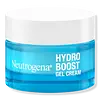What's inside
What's inside
 Key Ingredients
Key Ingredients

 Benefits
Benefits

 Concerns
Concerns

 Ingredients Side-by-side
Ingredients Side-by-side

Water
Skin ConditioningGlycerin
HumectantDimethicone
EmollientCetearyl Olivate
Sorbitan Olivate
EmulsifyingSodium Hyaluronate
HumectantSerine
MaskingGlycine
BufferingAlanine
MaskingThreonine
Arginine
MaskingProline
Skin ConditioningLysine Hcl
Skin ConditioningGlutamic Acid
HumectantSodium PCA
HumectantPCA
HumectantSodium Lactate
BufferingUrea
BufferingSodium Chloride
MaskingCitric Acid
BufferingBetaine
HumectantAllantoin
Skin ConditioningFructose
HumectantMaltose
MaskingTrehalose
HumectantGlucose
HumectantPentylene Glycol
Skin ConditioningSynthetic Beeswax
Emulsion StabilisingPolyacrylate Crosspolymer-6
Emulsion StabilisingDimethicone Crosspolymer
Emulsion StabilisingDimethiconol
EmollientEthylhexylglycerin
Skin ConditioningCaprylyl Glycol
EmollientSodium Hydroxide
BufferingWater, Glycerin, Dimethicone, Cetearyl Olivate, Sorbitan Olivate, Sodium Hyaluronate, Serine, Glycine, Alanine, Threonine, Arginine, Proline, Lysine Hcl, Glutamic Acid, Sodium PCA, PCA, Sodium Lactate, Urea, Sodium Chloride, Citric Acid, Betaine, Allantoin, Fructose, Maltose, Trehalose, Glucose, Pentylene Glycol, Synthetic Beeswax, Polyacrylate Crosspolymer-6, Dimethicone Crosspolymer, Dimethiconol, Ethylhexylglycerin, Caprylyl Glycol, Sodium Hydroxide
Water
Skin ConditioningCyclopentasiloxane
EmollientDimethicone Crosspolymer
Emulsion StabilisingGlycerin
HumectantPolyacrylamide
C13-14 Isoparaffin
EmollientLaureth-7
EmulsifyingSilanetriol
Hyaluronic Acid
HumectantDivinyldimethicone/Dimethicone Copolymer
C12-13 Pareth-23
CleansingC12-13 Pareth-3
EmulsifyingDimethylsilanol Hyaluronate
HumectantSaccharide Isomerate
HumectantOryza Sativa Bran Water
MaskingSaccharomyces/Xylinum/Black Tea Ferment
Skin ConditioningAvena Sativa Meal Extract
SoothingPyrus Malus Fruit Extract
Skin ConditioningLactobacillus
Skin ConditioningMaltodextrin
AbsorbentSodium Hydroxide
BufferingMethylsilanol Mannuronate
Skin ConditioningPhenoxyethanol
PreservativeMethylisothiazolinone
PreservativeAcrylates/C10-30 Alkyl Acrylate Crosspolymer
Emulsion StabilisingDisodium EDTA
CI 42090
Cosmetic ColorantWater, Cyclopentasiloxane, Dimethicone Crosspolymer, Glycerin, Polyacrylamide, C13-14 Isoparaffin, Laureth-7, Silanetriol, Hyaluronic Acid, Divinyldimethicone/Dimethicone Copolymer, C12-13 Pareth-23, C12-13 Pareth-3, Dimethylsilanol Hyaluronate, Saccharide Isomerate, Oryza Sativa Bran Water, Saccharomyces/Xylinum/Black Tea Ferment, Avena Sativa Meal Extract, Pyrus Malus Fruit Extract, Lactobacillus, Maltodextrin, Sodium Hydroxide, Methylsilanol Mannuronate, Phenoxyethanol, Methylisothiazolinone, Acrylates/C10-30 Alkyl Acrylate Crosspolymer, Disodium EDTA, CI 42090
 Reviews
Reviews

Ingredients Explained
These ingredients are found in both products.
Ingredients higher up in an ingredient list are typically present in a larger amount.
Dimethicone Crosspolymer is a silicone created by modifying dimethicone with hydrocarbon side chains. Due to its large size, it does not penetrate skin. It is considered non-occlusive.
Dimethicone Crosspolymer is used to stabilize and thicken products. It also helps give products a silky feel.
Glycerin is already naturally found in your skin. It helps moisturize and protect your skin.
A study from 2016 found glycerin to be more effective as a humectant than AHAs and hyaluronic acid.
As a humectant, it helps the skin stay hydrated by pulling moisture to your skin. The low molecular weight of glycerin allows it to pull moisture into the deeper layers of your skin.
Hydrated skin improves your skin barrier; Your skin barrier helps protect against irritants and bacteria.
Glycerin has also been found to have antimicrobial and antiviral properties. Due to these properties, glycerin is often used in wound and burn treatments.
In cosmetics, glycerin is usually derived from plants such as soybean or palm. However, it can also be sourced from animals, such as tallow or animal fat.
This ingredient is organic, colorless, odorless, and non-toxic.
Glycerin is the name for this ingredient in American English. British English uses Glycerol/Glycerine.
Learn more about GlycerinSodium Hydroxide is also known as lye or caustic soda. It is used to adjust the pH of products; many ingredients require a specific pH to be effective.
In small amounts, sodium hydroxide is considered safe to use. However, large amounts may cause chemical burns due to its high alkaline.
Your skin has a natural pH and acid mantle. This acid mantle helps prevent harmful bacteria from breaking through. The acid mantle also helps keep your skin hydrated.
"Alkaline" refers to a high pH level. A low pH level would be considered acidic.
Learn more about Sodium HydroxideWater. It's the most common cosmetic ingredient of all. You'll usually see it at the top of ingredient lists, meaning that it makes up the largest part of the product.
So why is it so popular? Water most often acts as a solvent - this means that it helps dissolve other ingredients into the formulation.
You'll also recognize water as that liquid we all need to stay alive. If you see this, drink a glass of water. Stay hydrated!
Learn more about Water